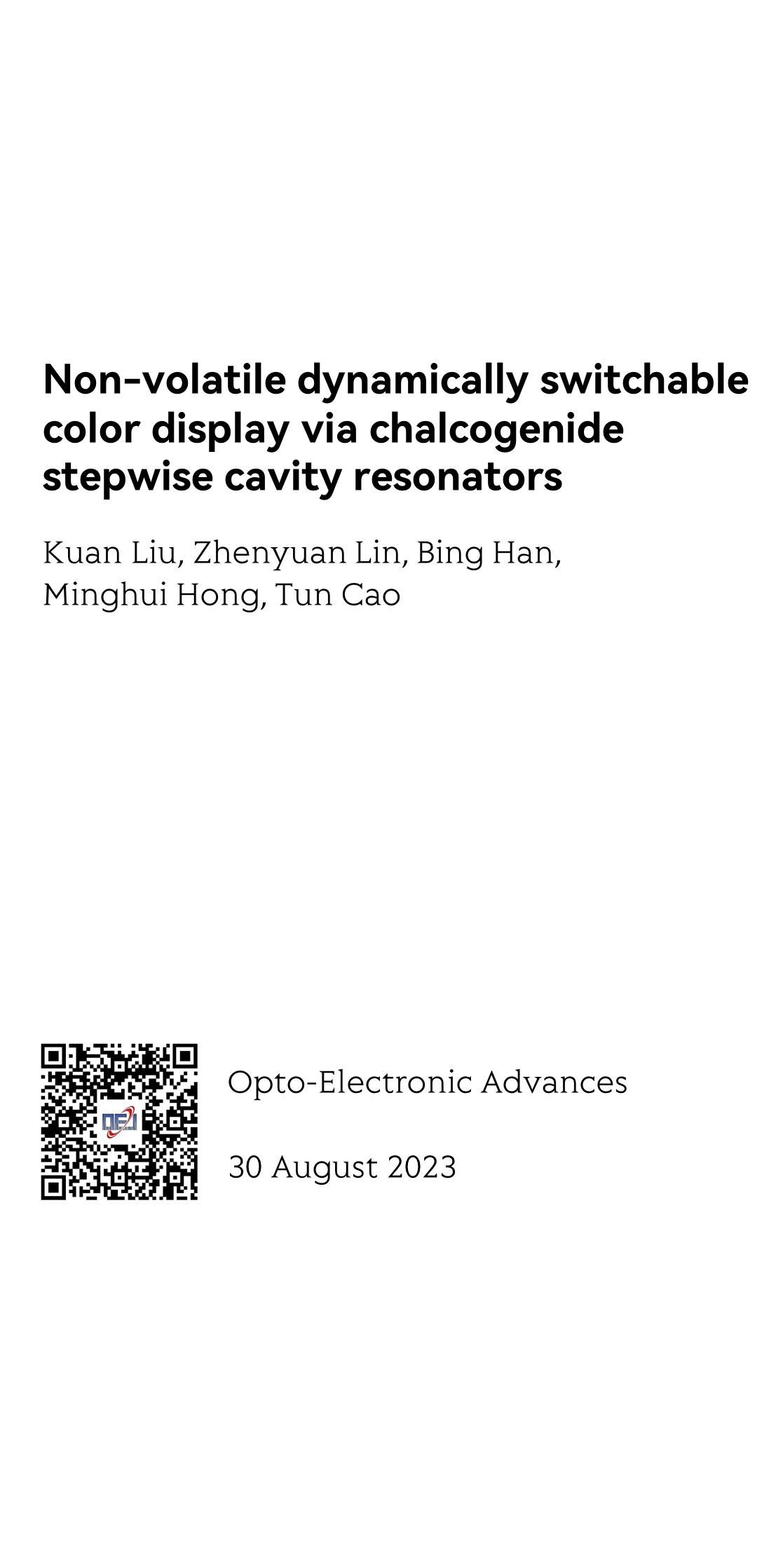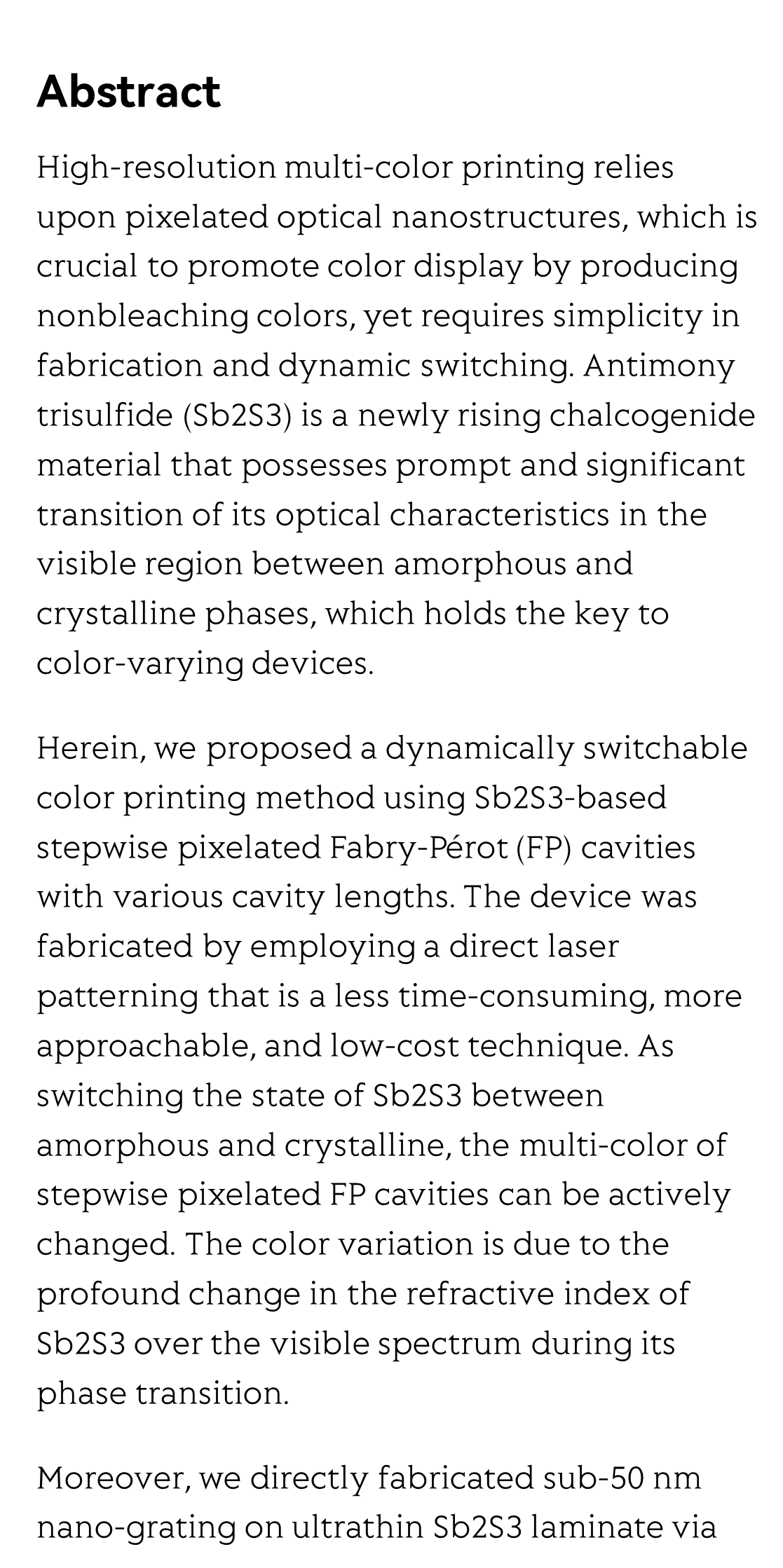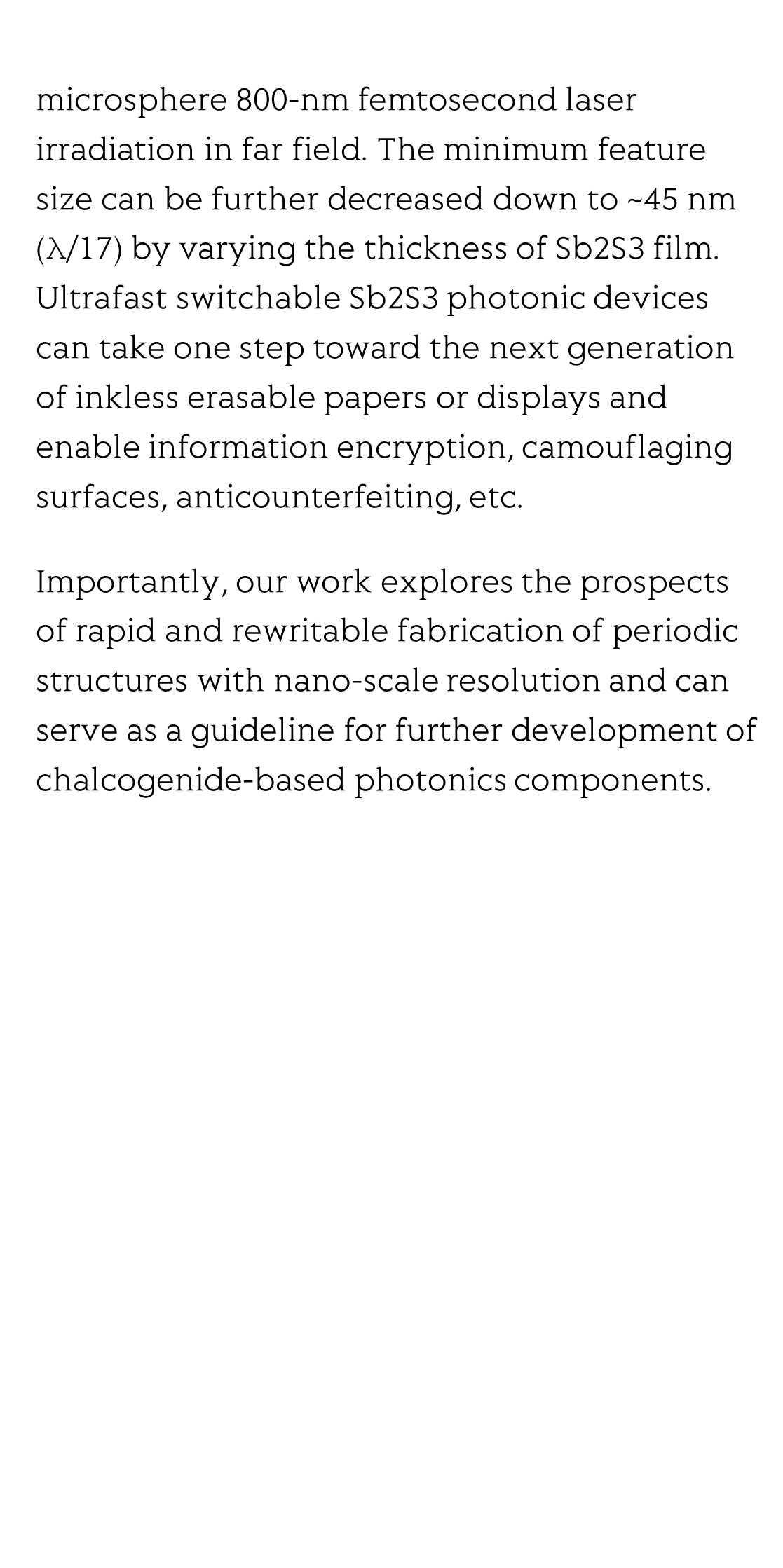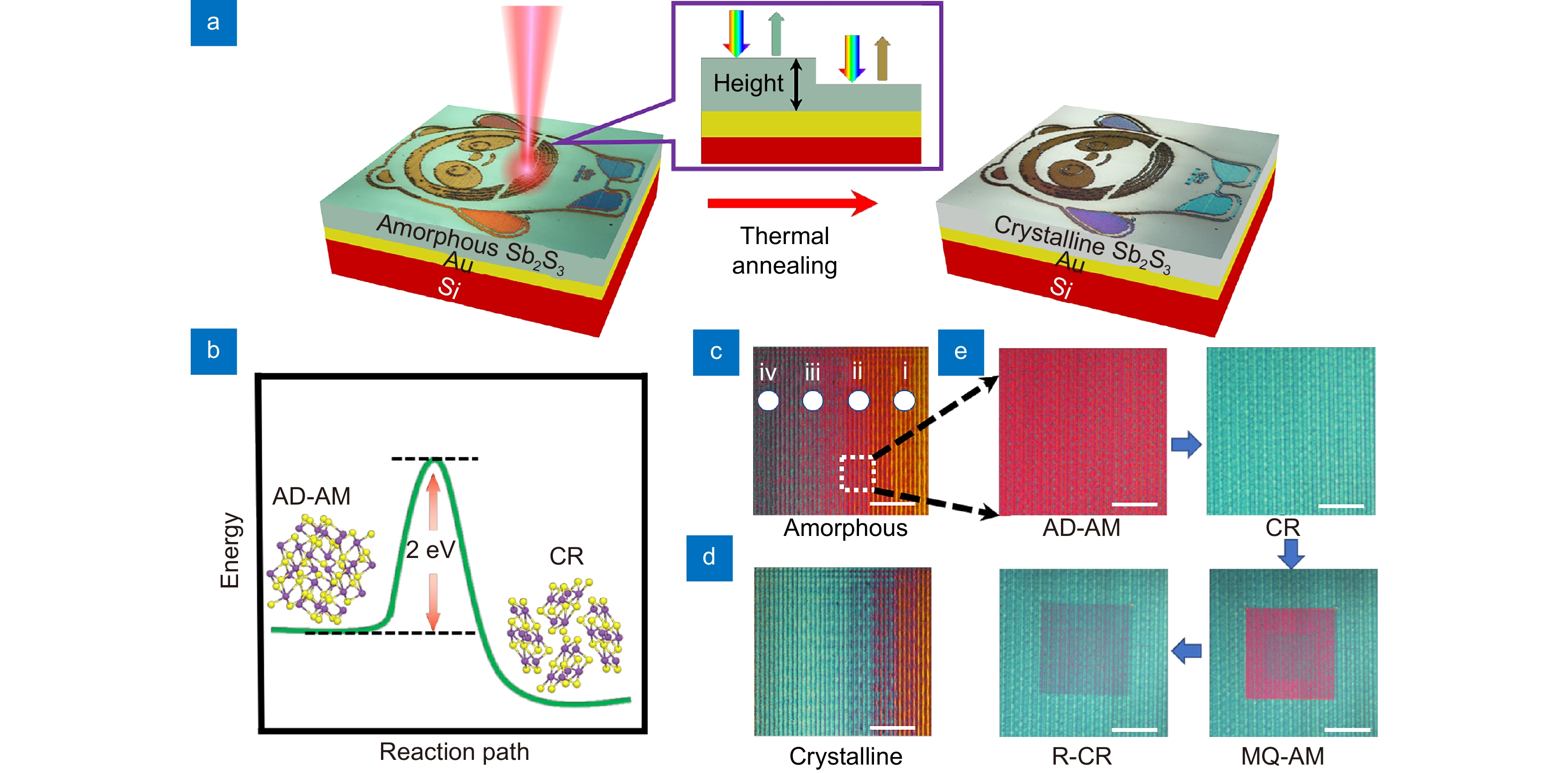(Peer-Reviewed) Non-volatile dynamically switchable color display via chalcogenide stepwise cavity resonators
Kuan Liu ¹, Zhenyuan Lin ³, Bing Han ¹, Minghui Hong ², Tun Cao ¹
¹ School of Optoelectronic Engineering and Instrumentation Science, Dalian University of Technology, Dalian 116024, China
中国 大连 大连理工大学光电工程与仪器科学学院
² Pen-Tung Sah Institute of Micro-Nano Science and Technology, Xiamen University, Xiamen 361102, China
中国 厦门 厦门大学萨本栋微米纳米科学技术研究院
³ Institute of Laser Engineering, Faculty of Materials and Manufacturing, Beijing University of Technology, Beijing, 100124, China
中国 北京 北京理工大学激光工程学院 材料加工工程系
Opto-Electronic Advances, 2023-08-30
Abstract
High-resolution multi-color printing relies upon pixelated optical nanostructures, which is crucial to promote color display by producing nonbleaching colors, yet requires simplicity in fabrication and dynamic switching. Antimony trisulfide (Sb2S3) is a newly rising chalcogenide material that possesses prompt and significant transition of its optical characteristics in the visible region between amorphous and crystalline phases, which holds the key to color-varying devices.
Herein, we proposed a dynamically switchable color printing method using Sb2S3-based stepwise pixelated Fabry-Pérot (FP) cavities with various cavity lengths. The device was fabricated by employing a direct laser patterning that is a less time-consuming, more approachable, and low-cost technique. As switching the state of Sb2S3 between amorphous and crystalline, the multi-color of stepwise pixelated FP cavities can be actively changed. The color variation is due to the profound change in the refractive index of Sb2S3 over the visible spectrum during its phase transition.
Moreover, we directly fabricated sub-50 nm nano-grating on ultrathin Sb2S3 laminate via microsphere 800-nm femtosecond laser irradiation in far field. The minimum feature size can be further decreased down to ~45 nm (λ/17) by varying the thickness of Sb2S3 film. Ultrafast switchable Sb2S3 photonic devices can take one step toward the next generation of inkless erasable papers or displays and enable information encryption, camouflaging surfaces, anticounterfeiting, etc.
Importantly, our work explores the prospects of rapid and rewritable fabrication of periodic structures with nano-scale resolution and can serve as a guideline for further development of chalcogenide-based photonics components.
Meta-lens digital image correlation
Zhou Zhao, Xiaoyuan Liu, Yu Ji, Yukun Zhang, Yong Chen, Zhendong Luo, Yuzhou Song, Zihan Geng, Takuo Tanaka, Fei Qi, Shengxian Shi, Mu Ku Chen
Opto-Electronic Advances
2025-07-29
Broadband ultrasound generator over fiber-optic tip for in vivo emotional stress modulation
Jiapu Li, Xinghua Liu, Zhuohua Xiao, Shengjiang Yang, Zhanfei Li, Xin Gui, Meng Shen, He Jiang, Xuelei Fu, Yiming Wang, Song Gong, Tuan Guo, Zhengying Li
Opto-Electronic Science
2025-07-25







